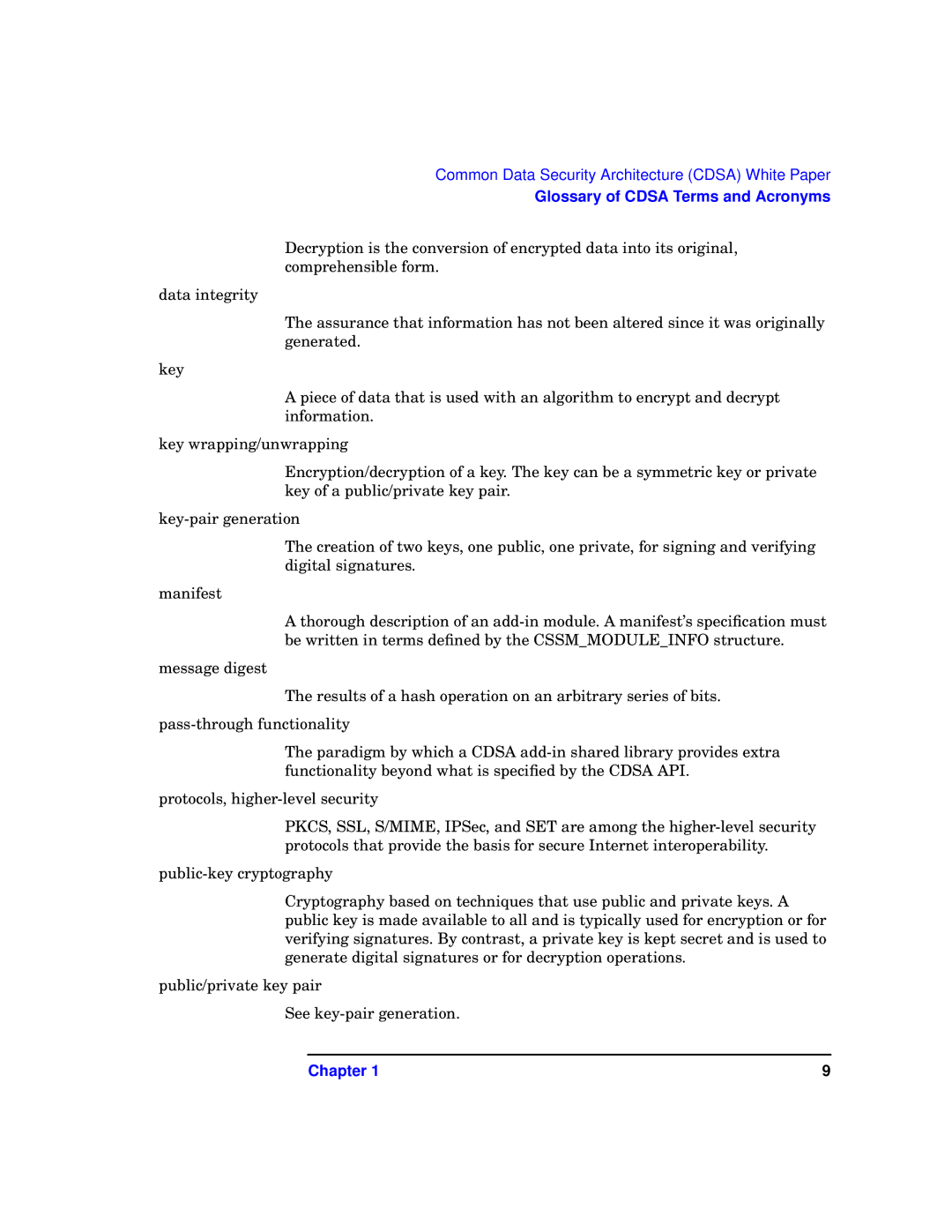Common Data Security Architecture (CDSA) White Paper
Glossary of CDSA Terms and Acronyms
Decryption is the conversion of encrypted data into its original, comprehensible form.
data integrity
The assurance that information has not been altered since it was originally generated.
key
A piece of data that is used with an algorithm to encrypt and decrypt information.
key wrapping/unwrapping
Encryption/decryption of a key. The key can be a symmetric key or private key of a public/private key pair.
The creation of two keys, one public, one private, for signing and verifying digital signatures.
manifest
A thorough description of an
message digest
The results of a hash operation on an arbitrary series of bits.
The paradigm by which a CDSA
protocols,
PKCS, SSL, S/MIME, IPSec, and SET are among the
Cryptography based on techniques that use public and private keys. A public key is made available to all and is typically used for encryption or for verifying signatures. By contrast, a private key is kept secret and is used to generate digital signatures or for decryption operations.
public/private key pair
See
Chapter 1 | 9 |
